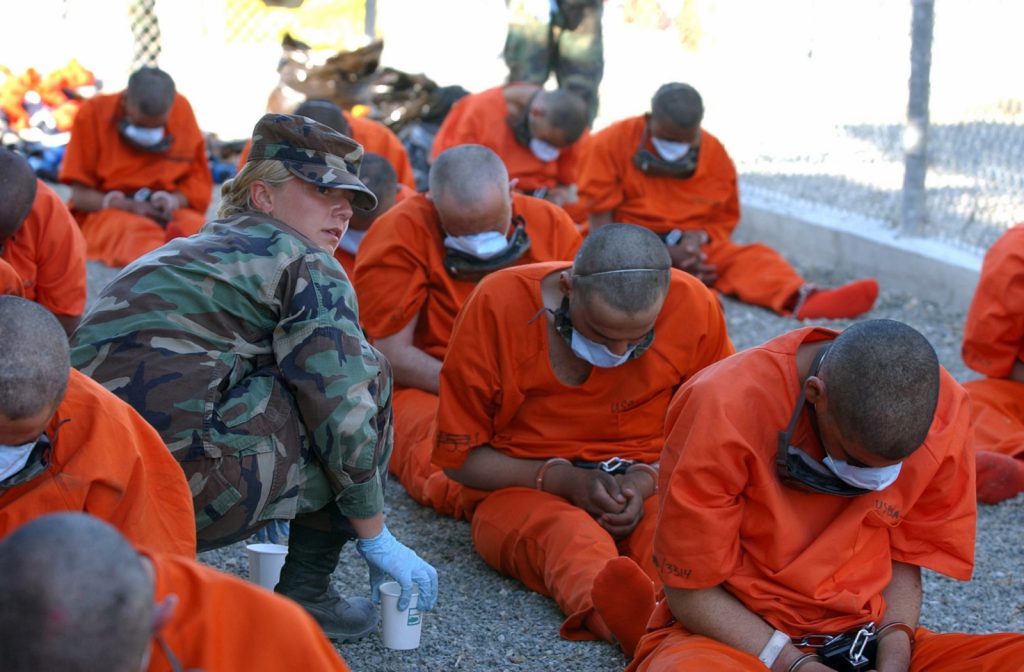| “In terms of wearing a mask, if you don’t have an infection really reduces the risks… almost not at all…”
Chris Whitty, Medical Adviser to the UK Government – 4 March 2020 |
| “The evidence for the use of masks by the general public – especially outdoors – is extremely weak…”
UK Health Sec. Matt Hancock – 24 April 2020 – Online Interview |
| “…there is no evidence that general wearing of face masks by the public who are well—affects the spread of the disease in our society. In terms of the hard evidence and what the UK government recommends we do not recommend face masks for general wearing by the public.” – UK Deputy Chief Medical Officer, Professor Jonathan Van Tam, 03 Apr 2020 |
| “The evidence on facemasks has always been quite variable… quite weak, quite difficult to know and there’s no real trials on it.”
UK Government Briefing Statement on 24 April 2020 |
| “The recommendation from SAGE is completely clear – which is that there is weak evidence of a small effect in which a face mask can prevent a source of infection going from someone who is infected to the people around them.” 28 April 2020 – Government Briefing |
| “The great majority of the population won’t die from this. A proportion of the population won’t get the virus at all. Of those who get symptoms – 80% mild or moderate. Even the very highest risk groups – the great majority if they catch this virus will not die” — Chris Whitty, 11 May 2020 |
From Arthur Firstenberg, Update on August 11, 2020)
Instead of acknowledging the harm from radio waves, society is tearing its fabric apart by instituting measures that are protecting no one and are instead sickening and killing people. I will mention just one of those measures here: facial masks.
As a person who went to medical school, I was shocked when I read Neil Orr’s study, published in 1981 in the Annals of the Royal College of Surgeons of England. Dr. Orr was a surgeon in the Severalls Surgical Unit in Colchester. And for six months, from March through August 1980, the surgeons and staff in that unit decided to see what would happen if they did not wear masks during surgeries. They wore no masks for six months, and compared the rate of surgical wound infections from March through August 1980 with the rate of wound infections from March through August of the previous four years. And they discovered, to their amazement, that when nobody wore masks during surgeries, the rate of wound infections was less than half what it was when everyone wore masks. Their conclusion: “It would appear that minimum contamination can best be achieved by not wearing a mask at all” and that wearing a mask during surgery “is a standard procedure that could be abandoned.”
I was so amazed that I scoured the medical literature, sure that this was a fluke and that newer studies must show the utility of masks in preventing the spread of disease. But to my surprise the medical literature for the past forty-five years has been consistent: masks are useless in preventing the spread of disease and, if anything, are unsanitary objects that themselves spread bacteria and viruses.
- Ritter et al., in 1975, found that “the wearing of a surgical face mask had no effect upon the overall operating room environmental contamination.”
- Ha’eri and Wiley, in 1980, applied human albumin microspheres to the interior of surgical masks in 20 operations. At the end of each operation, wound washings were examined under the microscope. “Particle contamination of the wound was demonstrated in all experiments.”
- Laslett and Sabin, in 1989, found that caps and masks were not necessary during cardiac catheterization. “No infections were found in any patient, regardless of whether a cap or mask was used,” they wrote. Sjøl and Kelbaekcame to the same conclusion in 2002.
- In Tunevall’s 1991 study, a general surgical team wore no masks in half of their surgeries for two years. After 1,537 operations performed with masks, the wound infection rate was 4.7%, while after 1,551 operations performed without masks, the wound infection rate was only 3.5%.
- A review by Skinner and Suttonin 2001 concluded that “The evidence for discontinuing the use of surgical face masks would appear to be stronger than the evidence available to support their continued use.“
- Lahme et al., in 2001, wrote that “surgical face masks worn by patients during regional anaesthesia, did not reduce the concentration of airborne bacteria over the operation field in our study. Thus they are dispensable.”
- Figueiredo et al., in 2001, reported that in five years of doing peritoneal dialysis without masks, rates of peritonitis in their unit were no different than rates in hospitals where masks were worn.
- Bahlidid a systematic literature review in 2009 and found that “no significant difference in the incidence of postoperative wound infection was observed between masks groups and groups operated with no masks.“
- Surgeons at the Karolinska Institutein Sweden, recognizing the lack of evidence supporting the use of masks, ceased requiring them in 2010 for anesthesiologists and other non-scrubbed personnel in the operating room. “Our decision to no longer require routine surgical masks for personnel not scrubbed for surgery is a departure from common practice. But the evidence to support this practice does not exist,” wrote Dr. Eva Sellden.
- Webster et al., in 2010, reported on obstetric, gynecological, general, orthopaedic, breast and urological surgeries performed on 827 patients. All non-scrubbed staff wore masks in half the surgeries, and none of the non-scrubbed staff wore masks in half the surgeries. Surgical site infections occurred in 11.5% of the Mask group, and in only 9.0% of the No Mask group.
- Lipp and Edwardsreviewed the surgical literature in 2014 and found “no statistically significant difference in infection rates between the masked and unmasked group in any of the trials.” Vincent and Edwards updated this review in 2016 and the conclusion was the same.
- Carøe, in a 2014 review based on four studies and 6,006 patients, wrote that “none of the four studies found a difference in the number of post-operative infections whether you used a surgical mask or not.”
- Salassa and Swiontkowski, in 2014, investigated the necessity of scrubs, masks and head coverings in the operating room and concluded that “there is no evidence that these measures reduce the prevalence of surgical site infection.”
- Da Zhou et al., reviewing the literature in 2015, concluded that “there is a lack of substantial evidence to support claims that facemasks protect either patient or surgeon from infectious contamination.”
Schools in China are now prohibiting students from wearing masks while exercising. Why? Because it was killing them. It was depriving them of oxygen and it was killing them. At least three children died during Physical Education classes — two of them while running on their school’s track while wearing a mask. And a 26-year-old man suffered a collapsed lung after running two and a half miles while wearing a mask.
Mandating masks has not kept death rates down anywhere. The 20 U.S. states that have never ordered people to wear face masks indoors and out have dramatically lower COVID-19 death rates than the 30 states that have mandated masks. Most of the no-mask states have COVID-19 death rates below 20 per 100,000 population, and none have a death rate higher than 55. All 13 states that have death rates higher 55 are states that have required the wearing of masks in all public places. It has not protected them.
“We are living in an atmosphere of permanent illness, of meaningless separation,” writes Benjamin Cherry in the Summer 2020 issue of New View magazine. A separation that is destroying lives, souls, and nature.
Further Studies on Use of Masks
https://www.oralhealthgroup.com/features/face-masks-dont-work-revealing-review/
https://universaloctopus.com/wp-content/uploads/2020/07/masks-not-effective-or-safe…..pdf
https://www.medrxiv.org/content/10.1101/2020.04.01.20049528v1
https://www.medrxiv.org/content/10.1101/2020.03.30.20047217v2
https://www.nejm.org/doi/full/10.1056/NEJMp2006372
https://jamanetwork.com/journals/jama/fullarticle/2749214
https://www.cmaj.ca/content/188/8/567
https://www.ncbi.nlm.nih.gov/pmc/articles/PMC5779801/
https://pubmed.ncbi.nlm.nih.gov/19216002/
https://aaqr.org/articles/aaqr-13-06-oa-0201.pdf
https://www.ncbi.nlm.nih.gov/pmc/articles/PMC4420971/
https://academic.oup.com/cid/article/65/11/1934/4068747
https://www.jstage.jst.go.jp/article/bio/23/2/23_61/_pdf/-char/en
https://link.springer.com/article/10.1007/BF01658736
https://www.journalofhospitalinfection.com/article/0195-6701(91)90148-2/pdf
https://www.ncbi.nlm.nih.gov/pmc/articles/PMC2493952/pdf/annrcse01509-0009.pdf
https://www.ncbi.nlm.nih.gov/pmc/articles/PMC4480558/
https://www.nap.edu/read/25776/chapter/1#6
https://wwwnc.cdc.gov/eid/article/26/5/19-0994_article
https://academic.oup.com/annweh/article/54/7/789/202744
https://www.ncbi.nlm.nih.gov/pmc/articles/PMC6599448/
https://www.acpjournals.org/doi/10.7326/M20-1342
https://www.acpjournals.org/doi/10.7326/L20-0745
https://pubmed.ncbi.nlm.nih.gov/29395560/
https://pubmed.ncbi.nlm.nih.gov/32590322/
https://pubmed.ncbi.nlm.nih.gov/15340662/
https://pubmed.ncbi.nlm.nih.gov/26579222/
https://pubmed.ncbi.nlm.nih.gov/30169507/
https://pubmed.ncbi.nlm.nih.gov/31159777/
https://pubmed.ncbi.nlm.nih.gov/30035033/
http://scielo.isciii.es/pdf/neuro/v19n2/3.pdf
http://press.psprings.co.uk/thx/july/thx215748.R.pdf






